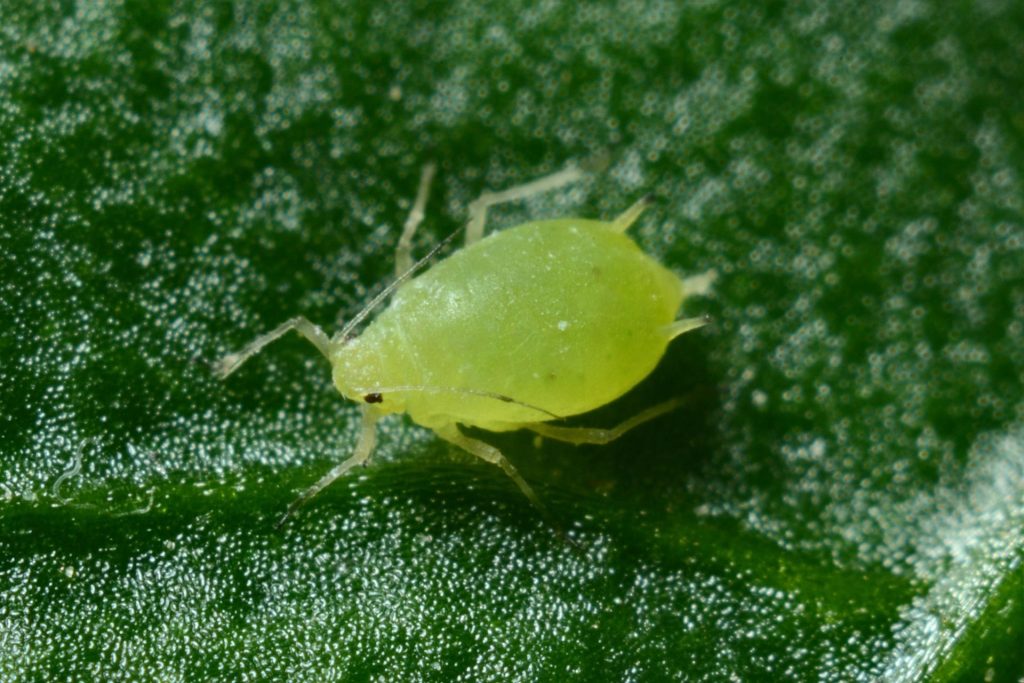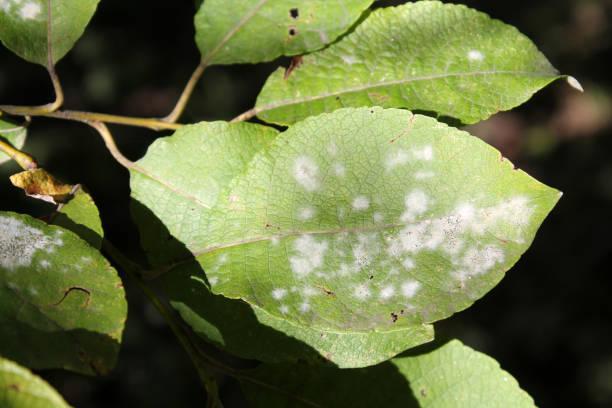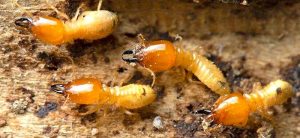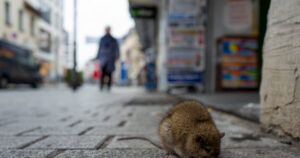The last thing you want to see in your garden is insects wreaking havoc on all your hard work.
Your garden is likely home to all sorts of plants, creatures, and bacteria. Some — like pollinators or predatory insects — are helpful. Others, however, can be destructive. But how can you get rid of the harmful pests without resorting to toxic pesticides and potentially hurting the beneficial bugs or your plants themselves?
Luckily, there are ways to prevent and control the pests in your garden — naturally. Whether you want to learn how to get rid of aphids or find a treatment for powdery mildew, let’s get these common pests out of your garden.
3 Common Pests You Might Find in Your Garden
Before we dive into prevention, you need to be able to identify some of the most common garden pests. While there are many different pests you might encounter, here are the top three pests you should keep an eye out for.
Aphids

What they look like. Aphids are tiny, pear-shaped critters with long antennae and spindly legs. They can be a range of colors including yellow, white, red, green, and black, and can be winged or wingless.
Where you’ll find them. Aphids are typically found on fruits, vegetables, flowers, and shade trees throughout North America. They tend to cluster together on plant stems — especially the new growth of your plants.
Why they end up on plants. Individual aphids species are attracted to different kinds of plants. Although most aphids do not have wings, when a colony becomes large enough they can grow them. The insects will travel when food is scarce, which is how they end up on new plants. This will leave you wondering how to get rid of aphids.
Plant damage. They feed on sap, which can lead to distorted or drooping leaves. After feeding, they leave behind a sticky substance known as honeydew, which is a sugary substance that can attract ants and lead to mold.
Damage control. If you find aphids on your plant, you can remove them with a strong spray of water. If the affected stem or growth is damaged, you can cut it off and crush it on the ground. Ladybugs and lacewings can also keep them under control.
Spider Mites

What they look like. Spider mites might appear as minuscule white, red, tan, or black spiders, and are only about 1mm long. Because of their size, they might be hard to spot. Instead, look out for the telltale sign of spider mites: webbing.
Where you’ll find them. There are many different varieties of spider mites, but the most common is the two-spotted spider mite. These mites are found in fields, orchards, greenhouses, yards, gardens, and even indoor growing environments across the country. There are also spider mites on weed. They typically live under leaves — so you might notice that the underside of a plant’s leaves appears dusty or discolored.
Why they end up on plants. During a female spider mite’s lifetime — which can last several weeks — a single mite can lay several dozen eggs. These eggs can develop quickly, and grow to adults in just a week. Once the mites grow, they will begin feeding on plants.
Plant damage. If infested, a plant might develop black or brown spots on the leaves. If the damage is severe, you might notice yellowing leaves or stunted growth.
Damage control. Like with aphids, a remedy for spider mites is to simply spray down the plant with water to knock the pests off the plant. You can also release other insects, like ladybugs and predatory mites, which will feed on the pests. If you’re looking for how to get rid of spider mites naturally You’ll only end up killing off the beneficial bugs that might help you control the spider mites.
Powdery Mildew

What it looks like. Powdery mildew is a common type of fungus that will look like circular white or light grey powdery spots on infected leaves. If there are enough spores, it might look like the leaf has been dusted with flour.
Where you’ll find it. There are many different species of mildew that affect different plants, but commonly affected garden plants include squash, pumpkins, cucumbers, melons, tomatoes, eggplants, peppers, beans, and peas. Powdery mildew on weed is also very common. You’ll most likely find powdery mildew spores on the top of the leaves, but they may grow on the undersides as well.
Why it ends up on plants. Powdery mildew spores are often carried by the wind. Dormant spores can also be carried to your plant from nearby weeds or other plant matter.
Plant damage. Although it’s rarely fatal, powdery mildew can spread to cover most of the leaves until they turn yellow and dry out. New growth like leaves, buds, and growing tips can become disfigured as well. If left unchecked, it can deprive your plant of water and nutrients.
Damage control. Once plants are affected, it can be difficult to get rid of powdery mildew without the right product. Powdery mildew treatment must happen quickly to prevent it from spreading. To prevent it from spreading to other plants, cut off all affected foliage and stems and destroy them. Don’t compost the leaves, as this can spread the disease further. To prevent it from happening again, you can use a product that is a natural fungicide.
Natural Prevention
If you walk into any gardening store, you’ll find no shortage of chemicals to control these pests in your garden.
But these chemicals can get expensive — and not to mention, be harmful to your garden. While you might be getting rid of root aphids and mildew, you could be killing the beneficial bugs that help keep your garden’s ecosystem balanced.
Instead of flooding your garden with chemical-filled pesticides, you can turn to natural solutions to keep your garden pest-free. The question is: What works and what doesn’t?
Let’s explore some of your natural pest control options to keep a safe and organic garden.
Companion Planting
Companion planting is an age-old gardening tool to protect fruits and vegetables. By planting two different plants together that complement each other, you can enjoy certain natural pest control benefits. For example, planning annuals like marigolds or poppies alongside your vegetables can attract beneficial insects like ladybugs. These bugs are likely to eat insects that might harm your garden, helping keep your plants protected naturally.
Other plants might have pest-repelling properties. Aphids, for example, are driven away by chives, coriander, and nasturtium.
Netting
The next line of defense is netting. Placing a fine mesh netting over your plants can protect them from insects, mice, and other animals that could harm your plants. It can also offer wind protection if needed.
The Best Solution for Garden Pests
At the end of the day, prevention is the best solution for garden pests. After all, it’s much easier to prevent pests from cropping up in your garden than it is to try and remove them and fix the damage caused to your plants.
But these natural preventative measures aren’t completely foolproof. They can help redirect or distract some pests, but they won’t offer 100% protection for the plant.
That’s where Trifecta Crop Control comes in. Crop Control is an all-in-one, natural pesticide, miticide, and fungicide. Crop Control acts as a preventative force field around plants, ensuring their health all season long. Whether it’s mites, aphids, or fungal issues, the synergistic combination of 5 food-grade, essential oils (garlic, peppermint, thyme, clove and rosemary) prevent and cure all different kinds of damage to your plants from common garden pests.
To learn more about Crop Control and what it can do for your garden, visit their website at what makes Crop Control a unique, natural pesticide — and what sets it apart from other pesticides.



